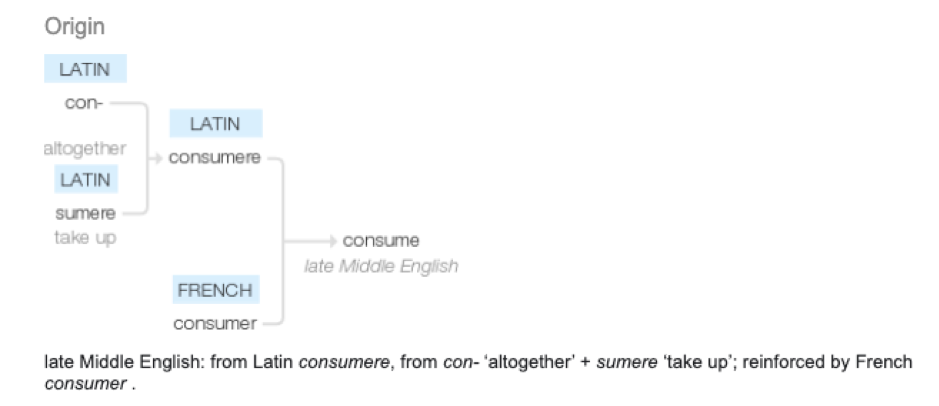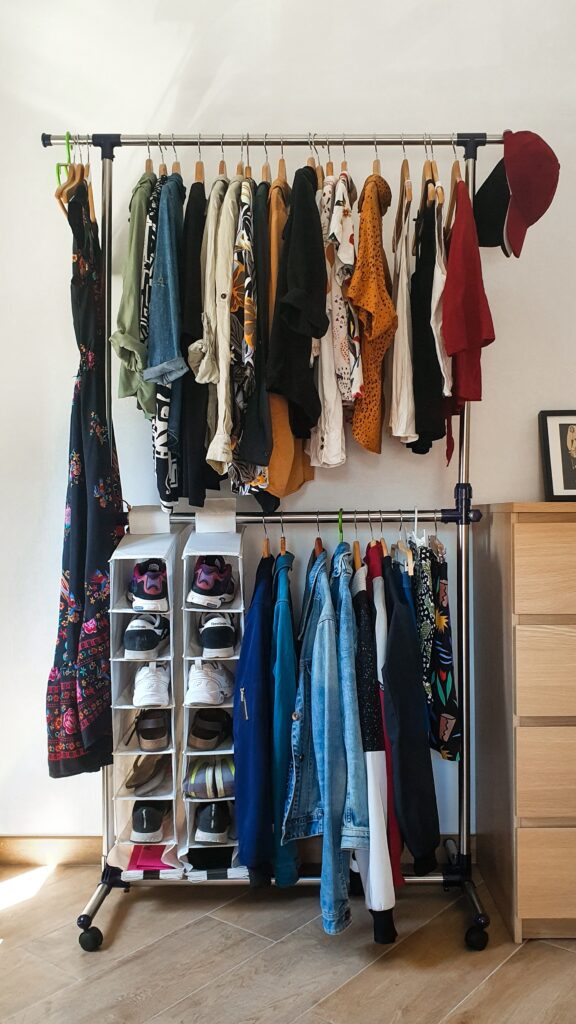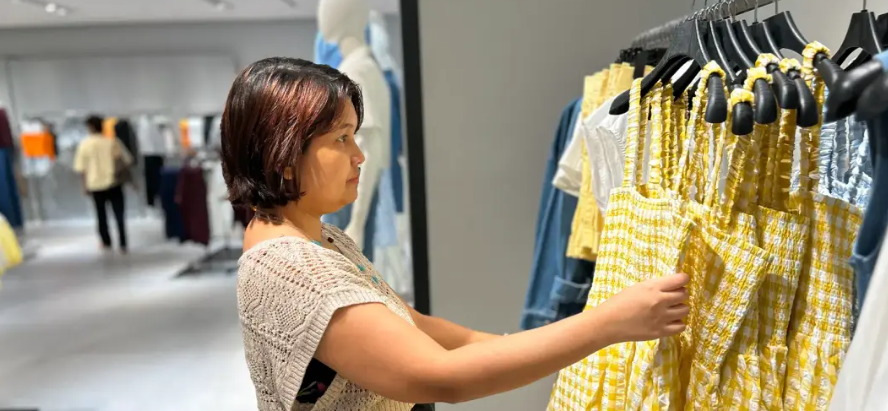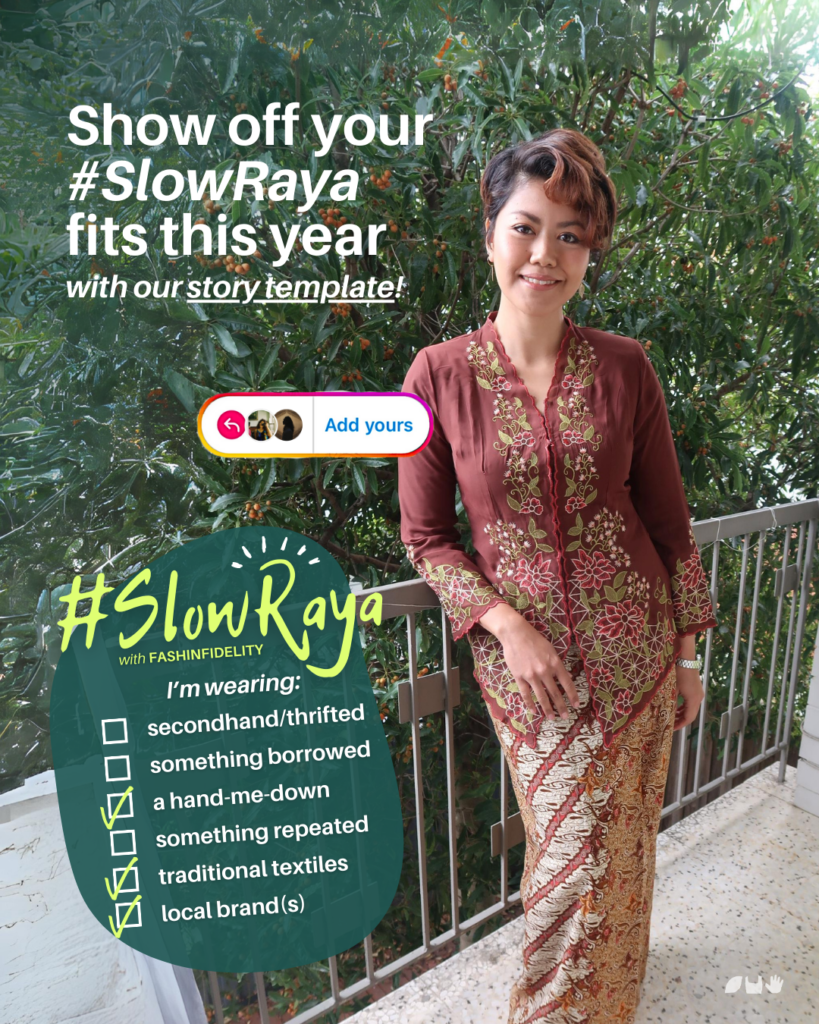If you’re like me and you’re pretty dismayed at fashion’s linkages to enslavement, exploitation, oppression and the cycle of waste and pollution, it’s very likely that we’d often asked ourselves, how do I consume differently?
2637 words, 13 mins read.
According to popular resources, the meaning of consume basically is: to ‘take up’, whether it being ingesting food, use resources, buying goods or services, and even emotional energy or thoughts. It originates from the Latin con- ‘altogether’ + sumere ‘take up’, reinforced by the French consumer.


What this means is that humans really are just in the business of consuming everyday, aren’t we? I don’t think there is any one day where we don’t consume anything. We’re always consuming something.
Humanity comes with an embedded footprint for literally just being and existing – so once you’ve gotten these facts out of the way, then we can move on to the next phase.
So, consuming differently with respect to your choices of fashion really is, at the heart of it, a clever combination of aesthetic and ethics.
With that in mind, it’s important to remember that there is no one-size-fits-all wardrobe, nor there is an ultimate wardrobe. What we mean by a Perfect Wardrobe, is one that sparks joy (borrowing that term from Marie, thanks), one that moves with body size, shape, and lifestyle preferences, one that is trans-seasonal (instead of trend-led), and one that reflects the environmental and social justice values you carry throughout the stages of your life.
So, how do we start? Follow the steps below.
Step 1: Design Beats Willpower

I know, this sounds like a motivational self-help book on growth.
Which it’s not. But it could be!
Have you heard of the 90/10 Law? Ha! Yes, another self-help mantra you think? Well, not quite. But it’s a legitimate thing. Let me explain.
It is the rule-of-thumb that says 90% of the results come from the first 10% of the process.
Digest that for a moment.
Bam!
(Full disclosure: there are many other definitions of the 90/10 Law, but this is by far, my favourite.)
When designing your Perfect Wardrobe, it’s very important that you consider your wardrobe is fit for the future. You need to start investing in a bit of time and energy in thinking about the full cost of your wardrobe, not in monetary terms, but how does your existing clothes fit in with any additions, as well as their cut or colour.
According to Lucy Siegle in her book, ‘To Die For: Is Fashion Wearing Out the World?’, anything you buy from now on must be subjected to greater scrutiny and a keener eye for ethical credentials and possibilities. While a piece may not be perfect in sustainability terms, it must have a level of ethical integrity that YOU yourself must be comfortable with. Are you really concerned about chemicals in the supply chain? Do you want to showcase innovations in fabric and upcycling? Are you an avid supporter of a handful of local designers who you think, with the right amount of support, can influence their own bubble? Do you think of consumption in terms of resources?
Compare the way we navigate our wardrobe pieces with the way we navigate our grocery shopping for a weekly meal. We know we need to get the basics right: carbs, fibres, protein, minerals. Add local grocer, calories, mileage travelled, and the type of farming practices, packaging, recyclability, and certifications you prefer — I call these my ‘true north’ compass. Then there are the ‘wants’ — like a chocolate bar. You splurge on a Fairtrade, organic, dark-chocolate version. Make it count. Quality over quantity.
The same can be said about your Perfect Wardrobe. For me, there are the basics: items that you will constantly wear to protect you from the elements. A good pair of jeans, shorts, trousers, boots, sandals, sneakers, t-shirts, shirt, and a dress. Then there is the fit and quality — my ‘true north’ decisions: I want anything I own to look great for my body shape, meaning I only purchase designs that I know will work, and feel comfortable for either home, the office, or socialising. I will only buy second-hand, and if I buy new, I would only buy them when I travel to a foreign place, and it has to be something culturally tied to the place, preferably, made by artisans or someone local, and with its provenance (down to the fabric and manufacturing) known. Then, I think about layering for different seasons. The layering combo could be a vintage piece that tells a story, a new item I bought because it embodies zero-waste principles in its making, or something funky I’ve had for a long time that always give me a sense of fulfilment – “sparks joy.” These are what I call the ‘wants’ — like the chocolate bar – they are not the basics that will carry you throughout the week, but they make you feel great, accomplished, and a little bit unique!
In essence, if you already know what you’re ‘designing’ in your wardrobe, it’s easy not to reach for the ‘cheap and cheerful’ stuff, like a terribly sweet pack of candy, that will wreck your diet in no time, much like the cheap and cheerful $5 horribly printed tee that will shrink in the wash, lose its colour, feels like it’ll rip any second, and never make it to your social media profile anyway, because deep down you know its ownership is ridden in guilt!
So, design your wardrobe for success! And stick to it!
Step 2: Don’t follow stamps of approval blindly

This one is a radical idea.
When I say stamps of approval, hear me out: it’s easy to let others do the thinking for us. Heck, there’s so many certifications out there on clothing, that none of *really* know what they represent.
I mean, I do. Because I’m a professional. But the rest of us?
Don’t lie to yourself. You probably have read a few things on social media and online articles, but never actually bothered to take the time to do next-level investigation on it.
If you have, well done!
If you haven’t, read on. Well, read on, anyways.
What I’m advocating is that you read the labels, the certifications, the stamps of approvals, yes. But make up your own mind about how they fit your 90/10 Rule. Remember this?
Don’t go and use the stamps of approval to justify your purchase. No. Use your true north compass to direct you to your purchases.
The reason I say this is because……… we started the blogpost with the definition of consume. Yes, that one.
We are supposed to consume differently. Say that out loud: consume.. dif-fer-rent-ly. Well done.

(Photo: Yulia Panova/Shutterstock)
Step 3: Sometimes, try something new
Okay, the world has moved on a bit in terms of sustainability and what that means nowadays.
I want to introduce you to a term that I first learnt at university (*ehem*, yes, I did study environmental engineering a while back.) The term is Cradle to Cradle. This idea was one that was put forward by American architect William McDonough and German chemist Michael Braungart, in their visionary 2002 book Cradle to Cradle. They argue that products and economic processes could be designed such that all waste becomes fodder for something else.
Nowadays, you might have been exposed to a different term, called circularity. Circularity is a system (also referred to as a circular economy) aimed at eliminating waste and the continual use of new resources. The key to circularity is a regenerative approach that means anything we ‘make’ or consume today, can somehow be used again, or over and over, or can biodegrade into something useful for the planet, to ‘regenerate’ another ‘product’ for consumption. (Keep reminding ourselves we are a species that consumes, okay.)
This regenerative approach is in contrast to the traditional linear economy, which has a “take, make, dispose” model of production.
In the cradle-to-cradle vision of McDonough and Braungart, waste doesn’t exist even as a concept. Every material is either a well-designed “technical nutrient,” capable of being endlessly recycled, or a biological one, safe to eat or compost.
It probably doesn’t matter now which idea came first, but what’s important is that circularity isn’t a new concept.
What we need to understand, though, is that we must look at circularity in a worldview that doesn’t exclude humans. If you think hard enough, humans form part of the planet’s ecosystem, so finding a harmonious way to co-exist then doesn’t just look at the way humans consume, but how other living beings consume from us, as well. Are you with me? Let me try to explain.

To make circularity more relevant, cast your mind to this statistic: Every year, 92.8 billion tonnes of resources enter the global economy. Only 11% comes from ‘cycled’ resources like treated water, recycling, or biogas. Each year, we add 21.5 billion tonnes to the global stock of resources, currently 890 billion tonnes. The vast majority of inputs to the economy, 93 billion tons in 2015, are resources extracted from the Earth: both finite (minerals, ores, and fossil fuels) and renewable ones (biomass.) Two-thirds of the material flowing through the economy, 67.4 billion tons in 2015, gets emitted as pollution — the carbon from fossil fuels, for example — or otherwise scattered or disposed of as waste.
When people throw around the word circularity nowadays, let me tell you this: they are only grasping a tenth of the intent of the word. Humans think that we need to reduce, reuse, recycle… a mindset obsessed with frugality. That a model of circularity starts with waste.
This is because humans think in terms of material circularity, meaning we visualise the things that we consume from the planet in the it’s-made-for-me sense, like we’re the centre of the universe, somehow. (Yup, insert rolls eyes emoji here.) But Mother Earth has been here long before us, and was here sustaining life forms other than humans, obviously.
So now, when we start to think as ourselves as part of that equation, then circularity really takes on a much more exciting prospect.

In an interview with The Circulars, Alexandre Lemille has this to say about circularity (I would highly recommend reading it):
“It’s an economy based on the principle of abundance of flows following natural cycles rules of regeneration. A tree has so many branches, so many leeves and so many fruits. But they were not meant to be produced just for the tree itself but to sustain and feed the surrounding ecosystem: the soil fertility, the birds’ nest, the fauna and the flora. On top of following the rules of the regeneration, it has restorative functions such as capturing the sun light and sequestering carbon. These two functions, the regeneration and the restoration ensures the resilience of the ecosystem it depends on to thrive. I translate this view into business strategies to increase corporate resilience throughout seminars, workshops or training. If their strategy is regenerative and restorative, they will thrive in the medium to long-term. This is what circular economy is about: identifying abundance of flows and to restore them to ensure your resilience is at its maximum.”
This is what I meant by possibilities in Step 1. When you look at designing your wardrobe into the future, don’t be afraid to try something new.
Ellen Macarthur Foundation came up with a white paper in 2017 called, “A New Textiles Economy”, that stated the four key ambitions needed to establish a circular economy in textiles are: “phasing out substances of concern and microfiber release; transforming the way clothes are designed, sold and used to break free from their increasingly disposable nature; radically improving recycling by transforming clothing design, collection, and reprocessing; and making effective use of resources and moving to renewable input.”
This builds on the work that Dr. Anna Brismar had done earlier, on Circular Fashion.
We are growing animal-based leather in labs now. We are making packaging wrappers that are embedded with flower seeds so that we are blooming life where perhaps there isn’t enough. We are taking agriculture waste such as pineapple skin to make plant-based leather. We are taking discarded fishnets from the ocean and turning them into footbeds in new shoes. We are using waterless dyeing processes that excludes the use of harmful substances. There’s so much innovation at the moment in food agriculture, building and housing, energy generation, computer hardware, and clothing, that we need to, simply, cultivate the seeds.
So when you see an emerging idea turned into action to how and what we can consume, this is literally–how we can consume differently.
Support some of these innovators who are paving the way. I’m sure there was a time in humankind’s history that we thought growing mould to make medicine sounded dumb. All advances in human creativity require pioneers. We must be open to how positive the future can be.

Photo: Thomas Lohnes/Getty Images
Step 4: Look beyond what you wear
In addition to the clothing in your wardrobe, I’d invite you to extend the way we consume other textiles and fabrics, such as school uniforms, carpets, workwear, performance gear (e.g. for hiking or sports), and curtains.
You might be surprised with the types of solutions already existing in the market to consume differently in this segment. We have felt, usually the backing on carpentry, that is not actually traditional felt. They’re probably made out of a combination of used plastic bottles and old textiles that have been reprocessed. Old cotton tees can be reused too, to weave into new bathroom mats. Old curtains can be repurposed to become fabric for re-upholstering of furniture.
When you buy new curtains though, think about where it can go next, and how it may benefit Mother Earth. I think you get the gist.
Step 5: Retire kindly
Finally, retire the contents of your wardrobe kindly. Organise a swap party with your friends over an afternoon tea (or drinks!) for items that no longer serve your lifestyle. I normally have a rule of bring 5 items, take home 5. Do not, under any circumstances, donate to charity clothes that are torn, dirty, or unhygienic (i.e. full of dog fur.) Use these to wipe down oil or grease in the house, and as cleaning rags.
Retire your clothes how they deserved to be retired. Some of them can be turned into bedding for pets, given to a shelter, or become something else, like a tote, or a purse. There’re so many resources out there about upcycling, repurposing, and reimagining. Be kind to these clothes, much like how they’ve been kind to you.
It’s all in the way we look at things
It goes without saying that the way we look at our wardrobe can be transposed into other areas of our life. Your Perfect Wardrobe is waiting for you. I dare you to look at consuming, differently.
Thoughts? I’d love your feedback!
Join us in our Slow Fashion movement with the hashtags #ConscientiousFashionista and #wardrobetruths on Instagram, and follow us at @fashinfidelity.
Tags: #theperfectwardrobe #consumedifferently #keepfabricoutoflandfills #sustainability #circulareconomy #cradletocradle #circularfashion #circularity #ethicalfashion #sustainablefashion #ecofashion #greenfashion #responsiblefashion #recycledyarn #recycledfabric #recycling #conscientiousfashionista #fastfashion #slowfashion #wardrobetruths #fashioneducation #fashion #fashinfidelity




